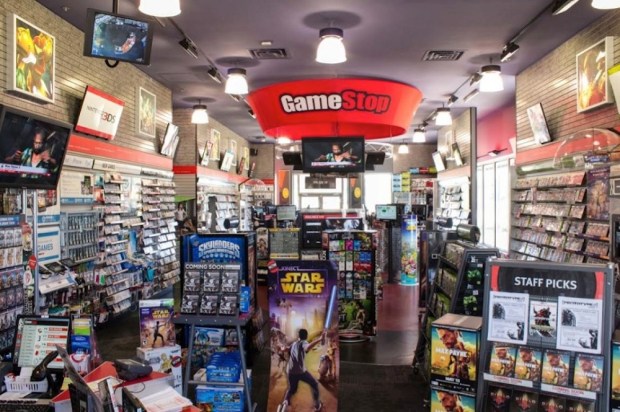How GameStop Used Ship-From-Store To Triple-Up Its Online Offerings

There is a reason “omnichannel” has become retail’s favorite buzzword. In four syllables, it presents what seems to be a solution for the slow, but steady, march of customers away from traditional retailer sales floors to their digital equivalents on desktop and mobile.
Sure, eTailers can offer the convenience of shopping from home in PJs, but real-life merchants can do that, too (with their digital portals) and then let the customer decide if they want to wait for delivery or drive down and get it themselves. In an omnichannel world, a retailer’s secret weapon is inventory in stores, as well as in warehouses. Merged commerce — done right — means retailers can co-opt everything their digital counterparts can do and then do it better.
Sounds great and appears as the obvious solution to changing consumer preferences in a rapidly changing world.
But appearances can be deceiving.
Because all the power of omnichannel comes at a price and not just the one in dollars, which, by itself, can be pretty steep. There are also big-time learning costs, as businesses designed around meeting customers in the store locations they control are now trying to adapt to meeting customers anywhere in the world they want to shop on a smartphone. And that’s while, at the same time, the committed omnichannel merchant is also redesigning their entire distribution networks.
It’s not impossible. Not quite a mission to Mars, but it’s is very, very hard and easier to do wrong than right, like trying to get to the Moon. And like a moonshot gone south, the costs of getting it almost, but not quite, right are high. Customers with lots of options in a target-rich environment can easily be one delayed package away from never coming back.
Which makes the successful attempts all the more notable since the spectacular failures tend to outnumber them.
GameStop, a niche retailer for all things video games, made that jump work with an assist from Radial (formerly, eBay Enterprise), and “scrappiness” managed to triple-up its online product assortment by working in ship-from-store.
And in so doing, it’s managed to take its core audience and most naturally loyal customers — gamers — and provide them with something they universally and actively are on the hunt for: rare, vintage and hard-to-find video games.
GameStop stores are physical marketplaces where customers can buy, sell and trade video games. This means two things, according to Richard Armour, senior director of multichannel for GameStop.
The first is that stores have much more varied selection than its warehouses, and it was highly desirable to its customers. Initial testing of the concept at a limited number of stores made that plain very fast.
“We started with a homegrown solution,” Armour said. “It very quickly became apparent this would be a key pillar of our omnichannel strategy as it significantly increased our online assortment.”
The problem was the second thing: Stores with such an active buying-trading-selling culture were hard to keep track of inventory-wise, which meant that the homemade solution it built to test the idea was not going to work as a real solution for the chain.
“It was pretty scrappy, and we needed something to support [ship-from-store] on much larger scale.”
This is where Radial — known at the time of the partnership as eBay Enterprise — stepped onto the scene with its toolbox of eCommerce solutions. The store-based fulfillment mode started rolling out about a year ago in October, and by February of this year, it has spread through the whole chain.
And with the completion, Armour noted, GameStop has tripled up the SKUs it has on offer and does strong enough business that it is a “meaningful channel for GameStop.” How meaningful is a bit of a mystery since GameStop does not have any numbers it wants to report but meaningful enough that it is counted separately from the rest of the chain’s online sales.
The transition was more than technical. Employees had to be trained to use the system and to offer appropriate timely responses to the ship-from-store orders. There are also layers of customization so that large superstores in major cities have different fulfillment capabilities than small mall-based kiosk stores.
“We tweak the system to be as efficient as possible,” Armour said, also noting the team changes system parameters as frequently as once a week.
There are bugs to work out. On occasion, there are circumstances where a customer ordering 10 items gets 10 packages from 10 stores, which is obviously not efficient for GameStop. Keeping the material interesting with photographs and descriptions is also very hard, given how fast the inventory can and does change.
Ship-from-store is one of many omnicommerce pushes GameStop has made in the last half-decade. BOPIS has also been featured, online reserves are also part of the package and, according to recently released figures, reserve online, pick up in-store is its fastest growing channel.
When omnichaneel works — as it is clearly is for GameStop — it can be, well, a game-changer. But making it work isn’t as easy as it sounds, and GameStop learned the first and most important lesson quickly: It knew when it was in over its head and decided to get help before it started drowning.
